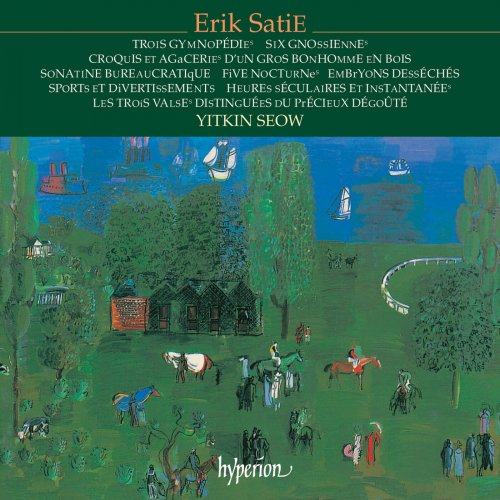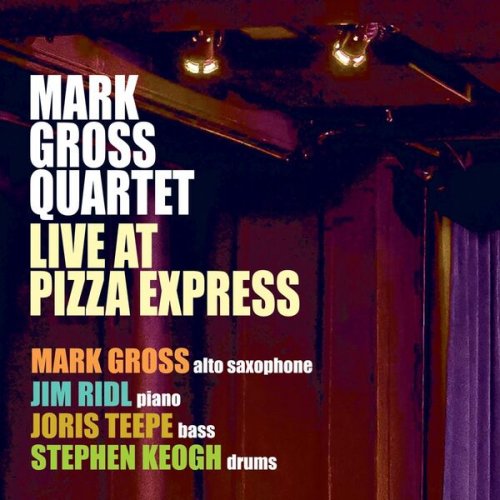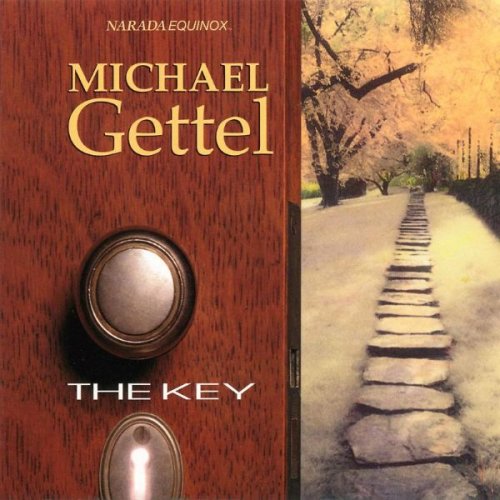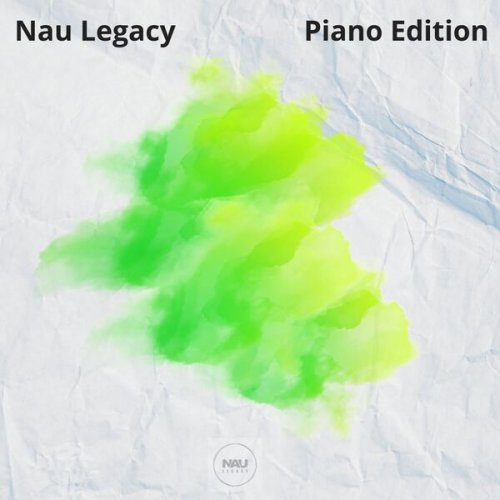Yitkin Seow - Satie: Gymnopédies, Gnossiennes & Other Piano Music (1989)

Artist: Yitkin Seow
Title: Satie: Gymnopédies, Gnossiennes & Other Piano Music
Year Of Release: 1989
Label: Hyperion
Genre: Classical
Quality: flac lossless (tracks) +Booklet
Total Time: 01:05:42
Total Size: 158 mb
WebSite: Album Preview
TracklistTitle: Satie: Gymnopédies, Gnossiennes & Other Piano Music
Year Of Release: 1989
Label: Hyperion
Genre: Classical
Quality: flac lossless (tracks) +Booklet
Total Time: 01:05:42
Total Size: 158 mb
WebSite: Album Preview
01. Gymnopédie No. 1
02. Gymnopédie No. 2
03. Gymnopédie No. 3
04. Gnossienne No. 1
05. Gnossienne No. 2
06. Gnossienne No. 3
07. Gnossienne No. 4
08. Gnossienne No. 5
09. Gnossienne No. 6
10. Embryons desséchés: I. d'Holothurie. Allez un peu
11. Embryons desséchés: II. d'Edriophthalma
12. Embryons desséchés: III. de Podophthalma
13. Croquis et agaceries d'un gros bonhomme en bois: I. Tyrolienne turque
14. Croquis et agaceries d'un gros bonhomme en bois: II. Danse maigre (à la manière de ces messieurs)
15. Croquis et agaceries d'un gros bonhomme en bois: III. Españaña
16. Sports et divertissements: I. Choral inappétissant. Grave
17. Sports et divertissements: II. La balançoire. Lent
18. Sports et divertissements: III. La chasse. Vif
19. Sports et divertissements: IV. La comédie italienne (À la napolitaine)
20. Sports et divertissements: V. Le réveil de la mariée. Vif, sans trop
21. Sports et divertissements: VI. Colin-Maillard. Petitement
22. Sports et divertissements: VII. La pêche. Calme
23. Sports et divertissements: VIII. Le yachting. Modéré
24. Sports et divertissements: IX. Le bain de mer. Mouvementé
25. Sports et divertissements: X. Le carnaval. Léger
26. Sports et divertissements: XI. Le golf. Exalté
27. Sports et divertissements: XII. La pieuvre. Assez vif
28. Sports et divertissements: XIII. Les courses. Un peu vif
29. Sports et divertissements: XIV. Les quatre-coins. Joie modérée
30. Sports et divertissements: XV. Le pique-nique. Dansant
31. Sports et divertissements: XVI. Le water-chute. Gracieusement
32. Sports et divertissements: XVII. Le tango. Modéré & très ennuyé
33. Sports et divertissements: XVIII. Le traîneau. Courez
34. Sports et divertissements: XIX. Le flirt. Agité
35. Sports et divertissements: XX. Le feu d'artifice. Rapide
36. Sports et divertissements: XXI. Le tennis. Avec cérémonie
37. Heures séculaires et instantanées: I. Obstacles venimeux
38. Heures séculaires et instantanées: II. Crépuscule matinal (de midi)
39. Heures séculaires et instantanées: III. Affolements granitiques
40. Les 3 Valses distinguées du précieux dégoûté: I. Sa taille
41. Les 3 Valses distinguées du précieux dégoûté: II. Son binocle
42. Les 3 Valses distinguées du précieux dégoûté: III. Ses jambes
43. Sonatine bureaucratique
44. Nocturne No. 1
45. Nocturne No. 2
46. Nocturne No. 3
47. Nocturne No. 4
48. Nocturne No. 5
One day Erik Satie arranged a session of what he called musique d’ameublement. From various parts of the room came the sound of a piano, three clarinets and a trombone. They played, over and over again, scraps of music from anything that caught the players’ fancy. The bemused audience tried to listen politely. Satie bustled among them, pince-nez flashing, umbrella whirling. ‘Talk, go on talking’, he commanded; ‘keep moving. Whatever you do, don’t listen!’ The instruments honked and squeaked their disjointed phrases while people looked at each other in alarmed puzzlement. Musique d’ameublement, or ‘furnishing music’, was yet another of Satie’s avant-garde jokes. It served, he argued, the same purpose as heating, lighting and ventilation. It should be supplied in public buildings, in lawyers’ offices, in banks – no marriage ceremony would be complete without it. Sixty years later his idea is no longer thought crazy. Everywhere you go now you are accompanied by the ceaseless drool of background music: in pubs, restaurants, buses, clubs, funeral parlours. Thanks to Walkman earphones everyone can now carry their own ‘furnishing music’ about with them. Yesterday’s heresies become today’s accepted practice.
When Satie died five years afterwards at the age of fifty-nine, his liver rotten with cirrhosis after a lifetime’s devotion to cognac and absinthe, he bequeathed a strange legacy. It included the Trois Gymnopédies, once considered eccentric but now so tamed and domesticated that they are used as incidental music for TV commercials. They were written when he was only twenty-two and take their name from the adjective ‘gymnopaedic’ which refers to the dances and exercises ritually performed by naked boys at public festivals in ancient Greece. Hypnotic, haunting, they pursue their measured way over a misty bass and, without travelling very far, create an illusion of steady movement forward. There is a parallel in French art of the time with Puvis de Chavannes, a painter whose clear lines, unforgiving simplicity and statuesque groupings find an echo in the purity of the Gymnopédies.
Three years later Satie began the series of Gnossiennes, the title again inspired by classical Greece and the palace of Knossos in Crete – or it might have been coined from the word gnostique which Satie had come across in his mystical studies of Rosicrucianism. Here he indulged his notorious habit of adding incongruous verbal instructions to the player. ‘Interrogate’, runs one of his injunctions. ‘Without pity’, says another. At one point he sternly advises: ‘Equip yourself with clear-sightedness’. The Gnossiennes are innocent of bar lines and time signatures, and the music falls naturally into place without them. They are, like the composer himself, elusive, withdrawn, enigmatic.
As is to be expected, the five Nocturnes have nothing at all Romantic about them, nothing of Chopin’s graceful melancholy. They are austere and monochrome in spirit. Perhaps because they are among the last works he wrote for the piano and constitute a grave farewell to the instrument he loved but never played very adequately, the Nocturnes display an objective quality and lack facetious instructions to the player. Satie, you feel, has reached a point where he is no longer in the mood for jocular whimsicalities and wants his music to speak alone.
The Sonatine bureaucratique, also a late work, is a straightforward pastiche of Clementi, depicting a day in the life of a leisurely civil servant. A verbal framework surrounds this amusing skit on the neoclassical style, as it does the remainder of the pieces on this recording.
The Heures séculaires et instantanées are accompanied by a surrealistic scenario involving a Negro holding his cerebellum in his hand, roads calling out to one another, twilight at midday, a village clock striking thirteen, and chunks of granite jostling among themselves in panic. For all that, the music is plain and angular. Similar jokes are cracked in Embryons desséchés, an elaborate discourse on the crustaceans Satie had read about in textbooks on marine biology. More amusing than the erudite comments is the parody he introduces of Chopin’s Funeral March and the fun he pokes at those rhetorical but protracted climaxes favoured by Romantic composers which go on for so long that the uninitiated are often tricked into premature applause. Parodistic, too, are the Croquis et agaceries with their tilts at Mozart’s Turkish March and Chabrier’s España. They were written in 1913, a year before Les trois valses distinguées du précieux dégoûté which feature the most baroque verbal scaffolding Satie ever erected around his music, including quotations from La Bruyère, Cicero and Cato. Each waltz, lucid and poised, presents an aspect of the world-weary dandy: his waist, his spectacles and his legs. Forget Satie’s distracting commentary and you will find the Trois valses among the most elegant music he composed.
In the following year of 1915 he wrote those little masterpieces Sports et divertissements. Stravinsky had originally been asked to illustrate with music an album of sketches portraying various sports and recreations. He asked too large a fee and Satie was offered the commission. Although the sum was lower than Stravinsky’s, the unpredictable Satie thought it too high and felt insulted. In the end he was persuaded to accept the ignoble idea of making money from his art and produced twenty-one cameos picturing golf, hunting, fishing, swimming, yachting and so on. He worked very hard at them, paring down his initial ideas, simplifying continually, reducing the material to as small a compass as possible, and cutting out inessentials to achieve the bare, lithe style that was his ideal. He turned smallness into an asset and capitalized on the virtues of brevity. The Sports et divertissements celebrate the triumphant culmination of his art.




![Tomasz Stanko, Polskie Radio - Jazz Rock Company: Live at Akwarium (Polish Radio Sessions vol. 6/6) (2025) [Hi-Res] Tomasz Stanko, Polskie Radio - Jazz Rock Company: Live at Akwarium (Polish Radio Sessions vol. 6/6) (2025) [Hi-Res]](https://www.dibpic.com/uploads/posts/2025-12/1765796554_cover.jpg)



